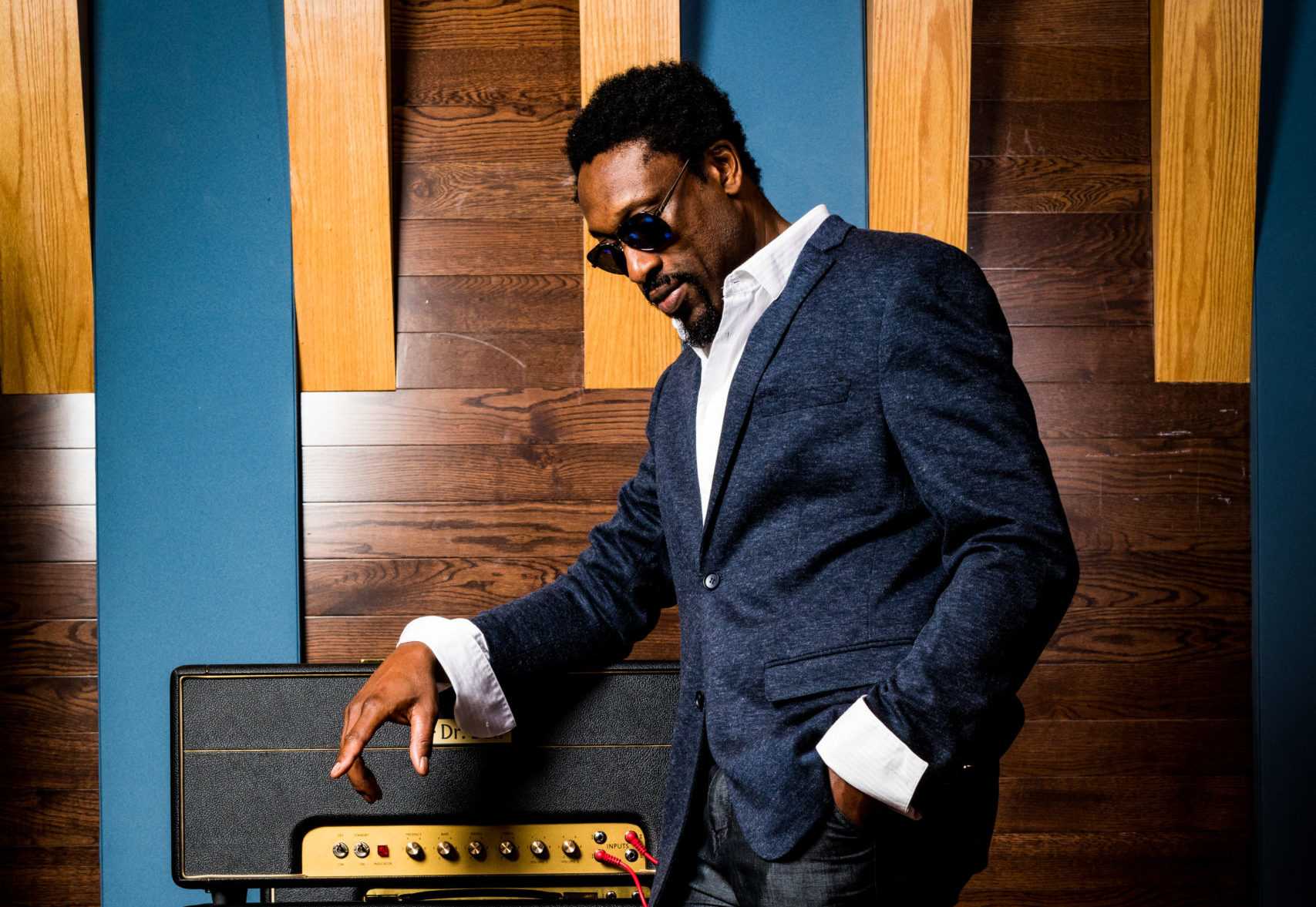on
BY SIMONE J. SMITH
“We are a mix of all cultures and that’s why we’re so rich. People need to understand we are no different than anyone else. We have both good and bad.” ~ CG Dillon
Hailing from Charlotteville, Tobago, our Classic Man has made a name for himself as a: musician, songwriter, performer, and producer. His many talents have allowed him to master the art of crafting music across multitudinous genres ranging from: Soca, R&B, Gospel, Rock, Rap, Hip Hop and various others. Inspired by no other then the greatest artist of all time the King of Pop, Michael Jackson, our Classic Man is already tantalizing audiences with his debut album Mix Emotions, which has come after the release of several successful singles, and now fuses his musical genius into a perfect cornucopia of rhythmic sounds. If that wasn’t enough, he is also the founder of As One Festival in Harmony Square; he knew that it was important to not only showcase the Caribbean’s rich cultural history, but to also preserve its place in cities like Brantford, Ontario. Toronto Caribbean Newspaper would like to present to you Tobago’s pride and joy CG Dillon.
“Music has always been a part of me, and I have always been a part of music”
Like many renowned artists before him, CG’s love for music started at a very young age. “I grew up in church, so from the age of five years old I began performing. It was an easy lifestyle to embrace because both sides of my family love music; this is where my love comes from,” CG tells me during our interview. “I think my talent began to peak at ten years old. I was playing with guys twice my age; I could play the bass guitar, but I really enjoyed the drums.”
His love for music grew with him, and when he moved to Canada in 1995, he brought all of his flavour and soul with him. After a brief stint of traveling back and forth from Tobago, CG made the decision to settle down in Brantford, Ontario. Now for some of us that may seem like a peculiar place for a man from the Caribbean to choose to settle down in; I asked CG about it. “This is where my children and mom were; plus, it was an affordable place to live, and more laid back than Toronto. There are not a lot of black people in Brantford. People would address me as a Jamaican, and I am not Jamaican. I love Jamaicans but there are more islands in the Caribbean then Jamaica. This is when I decided that it was important to show the real side of who we are as Caribbean’s; all sides of us.”
As One Festival in Harmony Square (originally FestCaribbean) grew quickly in the seven years that CG Dillon and his team of organizers hosted it. The festival started in Brantford Civic Centre, moved to District Civic Centre Auditorium, moved again to Branlyn Community Centre, and it quickly outgrew the centres confines and was moved to Harmony Square. It was a big step, but the small group of fellow Caribbean-born Brantford residents had given birth to a festival that showcased the culture of their homeland.
It was hard to find a suitable indoor venue for the carnival; the acoustics were an issue, and once they implemented Mas, they had to take into account the 15-foot high costumes. Before the carnival, CG recalls that they never really had anything except for a couple of clubs that had Caribbean elements. Beyond the live music, dance performances, DJ’s, steel pan, Mas and dance workshops, CG wanted the festival to be a place where people would come for cultural education. “When I started this, “ CJ tells me, “You could see the difference with how people related to me; this was a good thing. I wanted people to see that we are more then just Hawaiian shorts. Most importantly, this festival was important because my children are mixed, and they didn’t know much about the Caribbean. This was a great way to teach them.”
After seven successful years (2010 -2017), CG had to make a drastic decision. Funding a festival of this size was no easy financial feat, and after having to personally fund aspects of the festival, and going back and forth about finances, CG had to take a step back. Now that he was not worried about funding a carnival celebration each year, CG made the decision to revive his first love; making music.
“I am now going through a change; and I wanted to do more, I could not let others dictate how I move forward as a musician.”
Boldly, CG has put together 50 minutes plus of musical poetry that take us from sentiments of fun, love and heartbreak, to songs you can’t help but turn up to, and finally to songs that cover conscious subjects like poverty and environmental concerns. He possesses a unique style of delivering music, and it is one of the things that make him a favourite amongst his fans. “I decided that I am doing my own production; I understand how to be an artist. I used to sing calypso in Tobago, it was something that I was always doing, and I decided to take the leap this year. It is 15 songs, because I want to show that I have a full repertoire that I can perform. The production includes guest features from artists like Peeler, Afrikonda, Evan Simms and Juno nominated recording artist Alysha Brilla, and it was all recorded under Eudemonic Records.
With so many hits under his sleeve, musical connoisseurs are definitely in for a treat. You can check out our Classic Man on his website http://www.cgdillon.com, or visit him on Instagram at https://www.instagram.com/cgdillon/. His music can also be found on YouTube, Spotify, Deezer, and Google Play Music.
Stay in the loop with exclusive news, stories, and insights—delivered straight to your inbox. No fluff, just real content that matters. Sign up today!
We, as humans are guaranteed certain things in life: stressors, taxes, bills and death are the first thoughts that pop to mind. It is not uncommon that many people find a hard time dealing with these daily life stressors, and at times will find themselves losing control over their lives. Simone Jennifer Smith’s great passion is using the gifts that have been given to her, to help educate her clients on how to live meaningful lives. The Hear to Help Team consists of powerfully motivated individuals, who like Simone, see that there is a need in this world; a need for real connection. As the founder and Director of Hear 2 Help, Simone leads a team that goes out into the community day to day, servicing families with their educational, legal and mental health needs.Her dedication shows in her Toronto Caribbean newspaper articles, and in her role as a host on the TCN TV Network.













